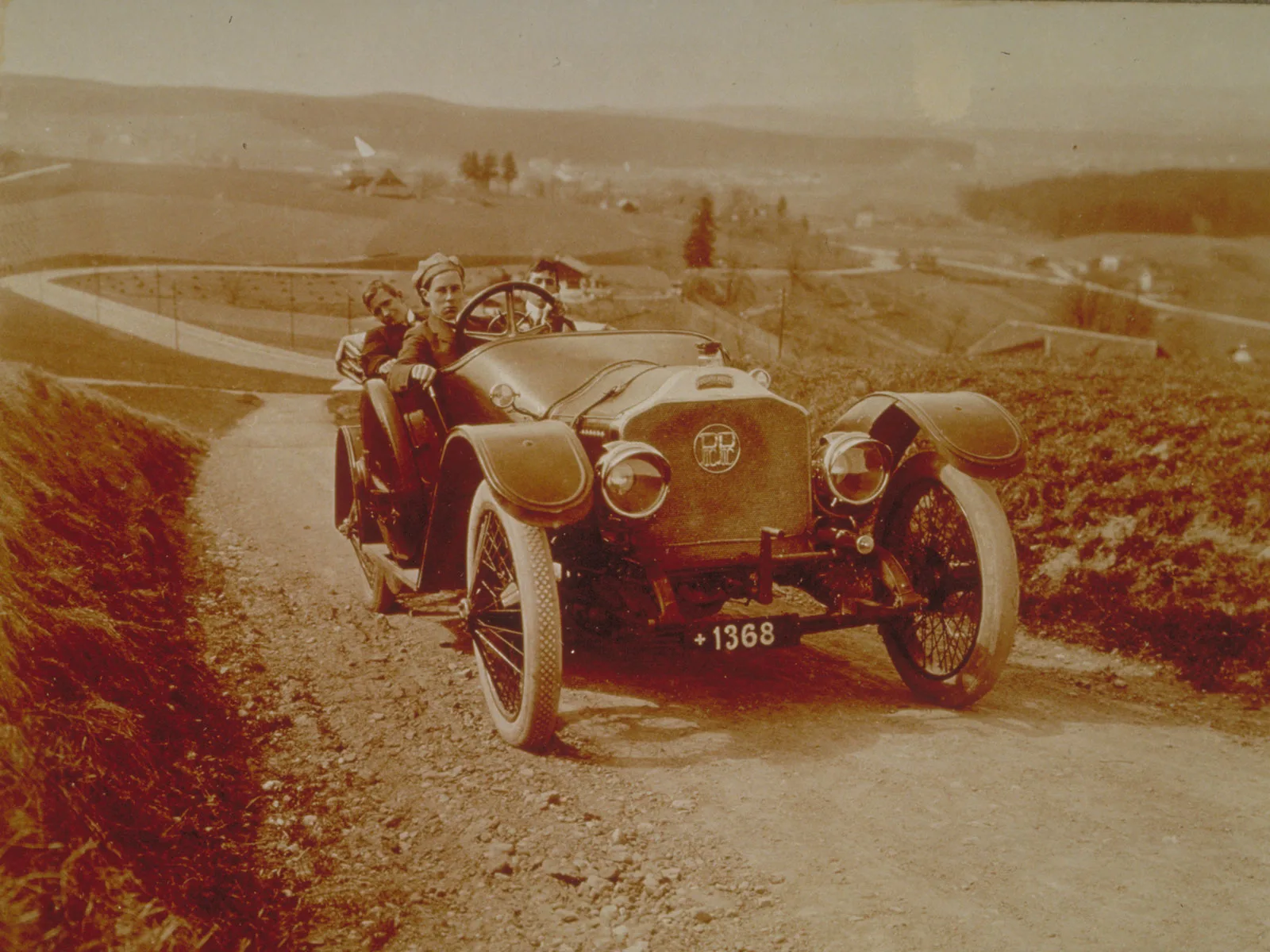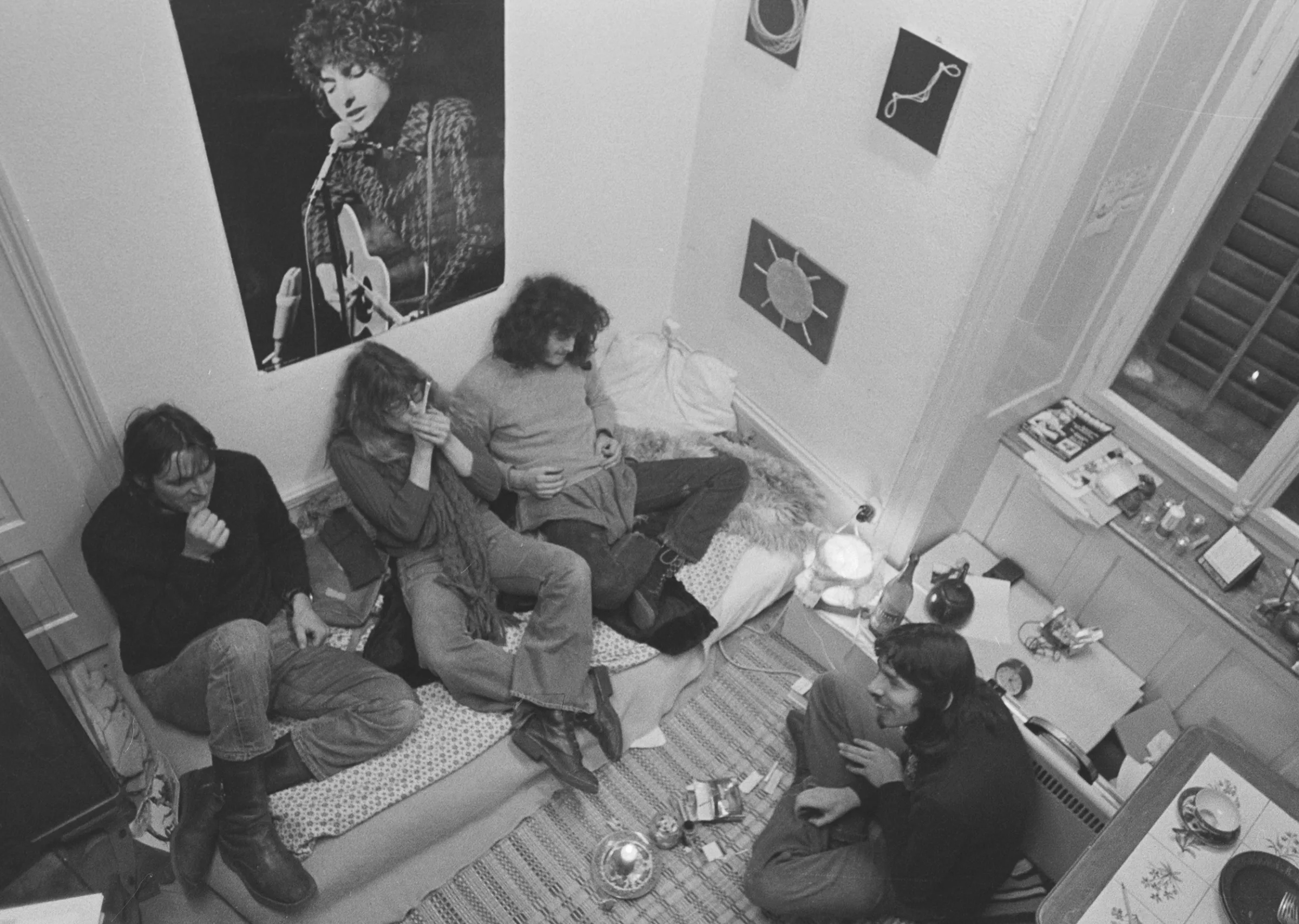
Slouching instead of sitting
It was not just the middle-class parlour that became obsolete in the 1960s – etiquette, too, was called into question: Sitting up straight at the table gave way to slouching comfortably on the sofa.
In the 19th century there were middle-class families who skimped on all the other rooms in order to be able to receive guests in a presentable parlour. Already in the late 1950s, the “good room” was portrayed in an advertisement as a taboo zone where children were not allowed and that, like a sacred site, remained mostly unused: Plastic-covered sofas are to this day considered the epitome of petty bourgeois taste. A caricature in the satirical magazine Nebelspalter from 1962 captures the growing aversion to conventional furniture. Two artist characters are celebrating Christmas without furniture on the floor and commenting that though it may be uncomfortable, at least it’s not so bloody bourgeois. Better to have no furniture at all than the wrong kind.
In the wild 1960s, old-fashioned furniture was on its last legs: In shared flats, beds were replaced by mattresses, shelves replaced by crates, and furniture items recovered from bulky waste or the charity shop were no longer a disgrace but a sign of anti-middle class individuality. People were no longer willing to spend money on furniture because it had lost its representational function and they wanted to remain open to change – they might well have been travelling to India soon, after all. In 1973, Ikea opened a branch in Spreitenbach, Switzerland to monetise on the demand for constant possible change with cheap furniture that you could put together yourself.
In the 1960s, sitting itself became a means of protest: The hippies attracted attention not only because of their clothes and hair, but also because they demonstratively “bummed around” idly on the floor, demonstrators protested against the police at “sit-ins” and chairs were smashed at rock concerts.
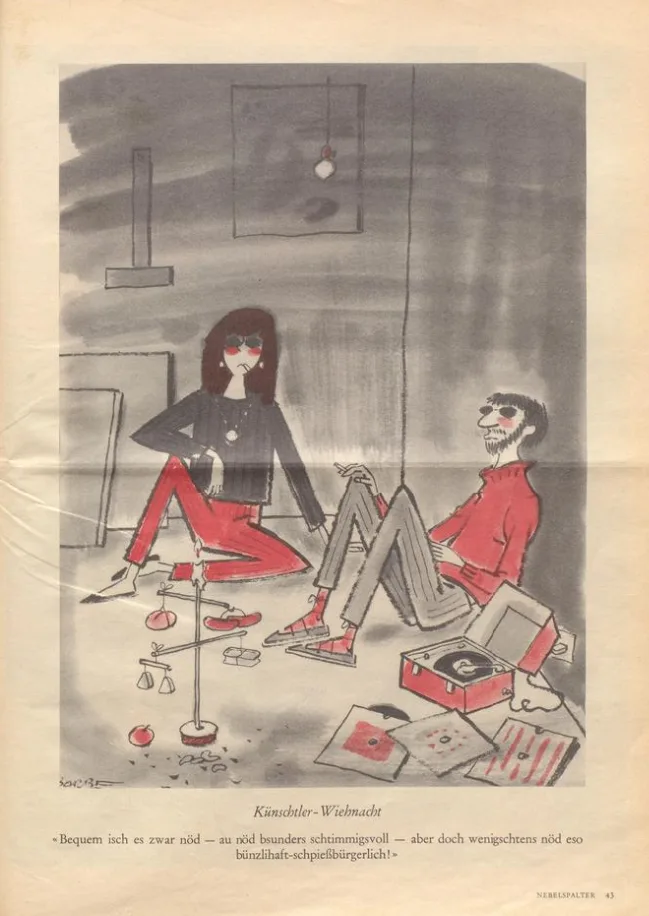
Against the middle-class lifestyle: Better to have no furniture at all than the wrong kind. Illustration: Franco Barberis, published in the satirical magazine Nebelspalter, 1962
In the 19th century there were middle-class families who skimped on all the other rooms in order to be able to receive guests in a presentable parlour. Already in the late 1950s, the “good room” was portrayed in an advertisement as a taboo zone where children were not allowed and that, like a sacred site, remained mostly unused: Plastic-covered sofas are to this day considered the epitome of petty bourgeois taste. A caricature in the satirical magazine Nebelspalter from 1962 captures the growing aversion to conventional furniture. Two artist characters are celebrating Christmas without furniture on the floor and commenting that though it may be uncomfortable, at least it’s not so bloody bourgeois. Better to have no furniture at all than the wrong kind.
In the wild 1960s, old-fashioned furniture was on its last legs: In shared flats, beds were replaced by mattresses, shelves replaced by crates, and furniture items recovered from bulky waste or the charity shop were no longer a disgrace but a sign of anti-middle class individuality. People were no longer willing to spend money on furniture because it had lost its representational function and they wanted to remain open to change – they might well have been travelling to India soon, after all. In 1973, Ikea opened a branch in Spreitenbach, Switzerland to monetise on the demand for constant possible change with cheap furniture that you could put together yourself.
In the 1960s, sitting itself became a means of protest: The hippies attracted attention not only because of their clothes and hair, but also because they demonstratively “bummed around” idly on the floor, demonstrators protested against the police at “sit-ins” and chairs were smashed at rock concerts.
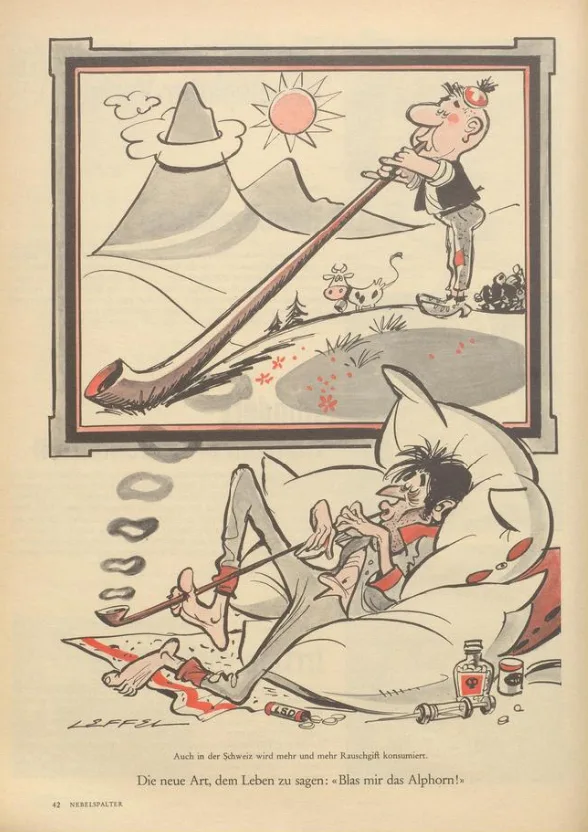
The bean bag chair was an affront to traditional sitting culture. Illustration: Jean Leffel, published in the satirical magazine Nebelspalter, 1969
Imagine 68 – The Spectacle of the Revolution
National Museum Zurich
14.09.18 - 20.01.19
Following the successful exhibitions “1900–1914. Foray into Happiness” (2014) and “Dada Universal” (2016), in 2018 Stefan Zweifel and Juri Steiner present their perspective of the generation of ‘68. The collage of the two guest curators, featuring objects, videos, photos, music and works of art, turns the atmosphere of 1968 into a multisensory experience. The exhibition takes a comprehensive look at this cultural time period, letting visitors float through Warhol’s Silver Clouds into a world of fantasies past.
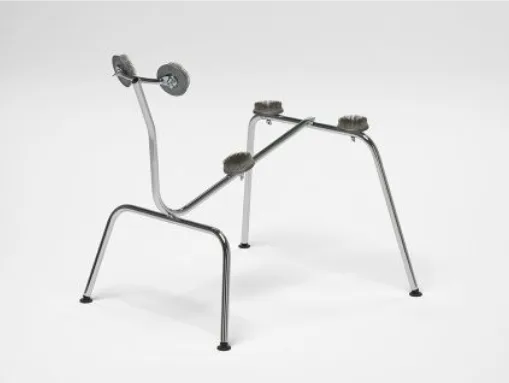
The rejection of sitting also influenced design ideas, as evidenced by this Maso Chair by Trix and Robert Haussmann from 1967. Photo: Museum für Gestaltung, Zurich


